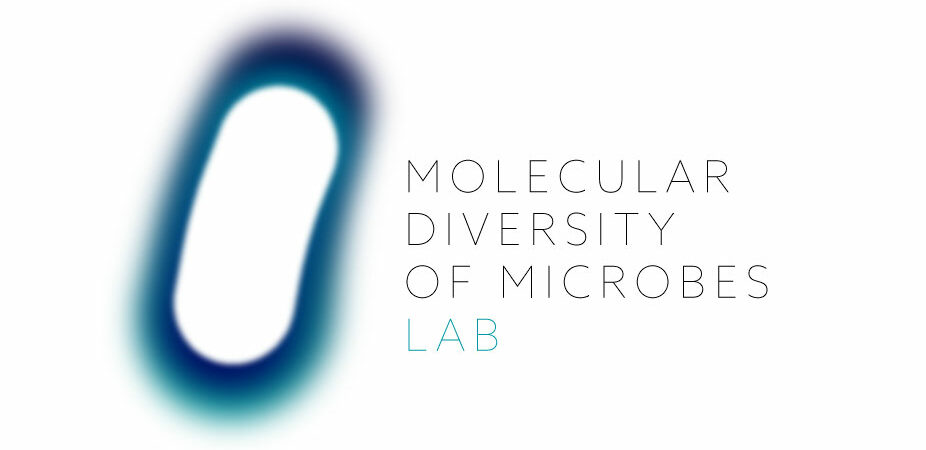
Our research
What are the fundamental principles that govern immune systems across the tree of life ?
Driven by the discovery that bacteria possess a far more diverse and conserved repertoire of immune mechanisms than previously recognized—including homologs of eukaryotic immune genes,and how it challenges the traditional divide between prokaryotic and eukaryotic immunity we investigate the shared logics of immunity across domains of life, which we term ancestral immunity. We combine bioinformatics and experimental approaches—spanning genomics, phylogenetics, bacterial genetics, and phage biology—to systematically chart the diversity of bacterial immune systems, understand their molecular mechanisms, evolution, and trace their links to immunity in fungi, plants, algae, and humans. Our work seeks both to uncover new immune genes and to inform therapeutic development through the discovery of novel immune functions and antiviral molecules.
Molecular mechanisms, evolution and ecology of antiphage systems
Our lab investigates the diversity, evolution, and function of bacterial immune systems. We developed DefenseFinder, a widely used tool to identify antiviral systems across thousands of microbial genomes, which we continue to expand with new data, structural annotations, and community-driven resources. Using these tools, we explore how immune systems shape bacterial evolution, ecology, and interactions with phages. We also explore how to use LLM to understand genomes and proteins. In parallel, we investigate the structural and evolutionary logic of specific systems,.
How to detect and predict antiphage systems in bacterial genomes ?How do antiphage systems function at the molecular level ?
How do antiphage systems evolve ?
Selected Preprints Publications:
– Systematic and quantitative view of the anti-viral arsenal of prokaryotes Nature Communications, 13:256 (2022)
– Exploring the diversity of anti-defense systems across prokaryotes, phages, and mobile genetic elements
Nucleic Acids Research, 10.1093/nar/gkae1171 (2025)
– Prediction of strain level phage–host interactions across the Escherichia genus using only genomic information
Nature Microbiology, 10.1038/s41564-024-01832-5 (2024)
– The highly diverse antiphage defence systems of bacteria
Nature Reviews Microbiology 21 (10), 686-700 (2023)
– Protein and genomic language models chart a vast landscape of antiphage defenses
bioRxiv, 2025.01. 08.631966 (2025)
– Structural basis for Lamassu-based antiviral immunity and its evolution from DNA repair machinery
bioRxiv, 2025.04. 02.646746 (2025)
Chemical defense: immunity via small-molecules production
We study chemical defenses—bacterial immune strategies that rely on the production of small molecules to counter phage infection. One line of work focuses on the viperin enzyme family, which is conserved across all domains of life. We combine evolutionary and biochemical approaches to investigate how viperins produce antiviral nucleotide analogues and how their functions have diversified over time through changes in enzymatic specificity and genomic context. In parallel, we explore biosynthetic gene clusters (BGCs) that encode antiviral metabolites, with a particular focus on Actinobacteria. This has led to the discovery of a large family of lanthipeptide-producing BGCs with potent antiphage activity. We are currently dissecting their molecular mechanisms and expanding our screening efforts to uncover new classes of antiviral compounds encoded by bacterial genomes.
What is the diversity of chemical defense immune systems ?
Are they conserved across domains of life
Selected Preprints Publications:
– Viperin immunity evolved across the tree of life through serial innovations on a conserved scaffold, Nature Ecology and Evolution 2024
Scientific Commentary: Nature Research Briefing
– A family of lanthipeptides with anti-phage function
bioRxiv, 10.1101/2024.06.26.600839 (2024)
Previous relevant research
Prokaryotic viperins, a novel family of defense systems that produce antiviral molecules
Viperin is an important anti-viral protein of humans that is conserved in animals. It has been shown to inhibit the replication of multiple human viruses by producing a molecule called ddhCTP, which acts as a chain terminator for viral RNA polymerase (Gizzi et al. 2018).
We showed that eukaryotic viperin originated from a clade of bacterial and archaeal proteins that protect against phage infection. Prokaryotic viperins produce a set of modified ribonucleotides that include ddhCTP, ddhGTP and ddhUTP. We further showed that prokaryotic viperins protect against T7 phage infection by inhibiting viral polymerase-dependent transcription, suggesting that it has an antiviral mechanism of action similar to that of animal viperin.
This study showed for the first time that natural antiviral compounds are produced by bacterial immune systems, opening avenues to look for more anti-viral molecules generated by bacteria. It’s also the first time such a strong conservation between a eukaryotic and prokaryotic immune system was demonstrated.
Publication: Prokaryotic viperins produce diverse antiviral molecules.
Bernheim A. Millman A., Ofir G., Meitav G., Abraham C., Shomar H., Rosenberg M., Tal N., Melamed S., Amitai G., Sorek R. Nature, (2021)
Twitter thread explaining the discovery
Scientific Commentary: Cell Host and Microbes
General public summary: English or French:
Press: Times of Israel, Jerusalem Post, News1, israel21, Sciences et avenir…
